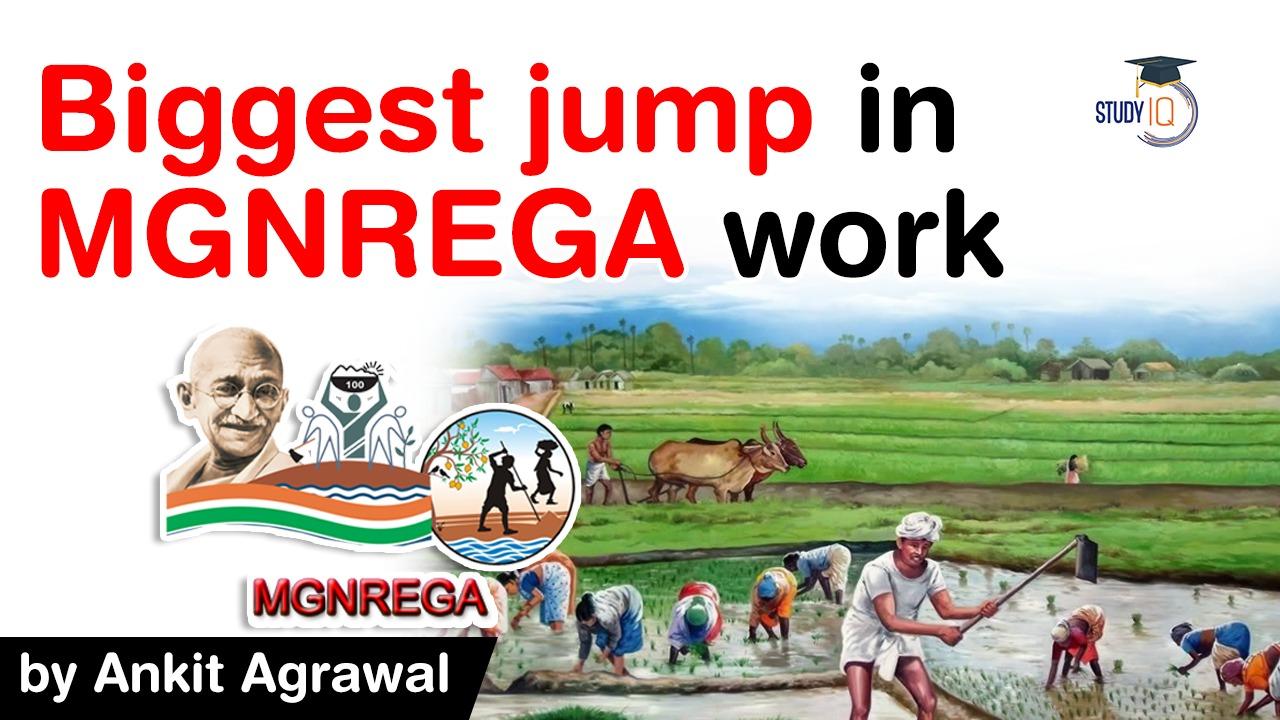Table of Contents

About MGNREGA
- The Mahatma Gandhi National Rural Employment Guarantee Act, earlier known as the National Rural Employment Guarantee Act
- It was passed on 7th September 2005 to augment employment generation and social security in India.
- It covers all districts of India except the ones with 100% urban population.
Key objectives
- Paid rural employment of not less than 100 days for each worker who volunteers for unskilled labour.
- Creation of durable assets in rural areas.
- Reduce urban migration from rural areas.
Share of expenditure?
- The Central Government pays for 100% of the wage expenditure & 75% of the material expenditure under the scheme.
Introduction
- This summer, as millions of migrants returned to their villages amid a rise in Covid cases,
- Another chart climbed steadily: the number of households enrolled under the Mahatma Gandhi National Employment Guarantee Scheme (MGNREGS).
- From April to August, over 83 lakh additional households or 1.6 crore persons joined the NREGA labour force by getting job cards,
- Taking the number of families under the scheme to an all-time high of 14.36 crore.
Rise in demand
- While the demand for unskilled work under NREGS had been steadily rising in recent years amid the economic slowdown,
- It soared to unprecedented levels during the pandemic.
- Data show 5.79 crore households availed NREGS between April 1 and September 10 during the current financial year —
- The highest since the scheme was launched on February 2, 2006.
Migrants returned?
- According to government estimates, more than 67 lakh migrants have returned to 116 districts across six states
- Bihar, Uttar Pradesh, Madhya Pradesh, Rajasthan, Jharkhand and Odisha — where the Centre had launched the Garib Kalyan Rojgar Abhiyan.
States with highest demand for new job card
- The states with highest demand for NREGA job card, is UP (21 lakh) and Bihar (11 lakh).
- At 3rd position West Bengal witnessed 6.8 lakh new jobs cards.
- But the districts of West Bengal — which saw 20 lakh migrants returning home, according to the state government’s estimates — were not part of GKRA.
- Of the top 5 districts in the country for households working under NREGA, four are in West Bengal — Purba Bardhaman, Hooghly, Paschim Medinipur, 24 Parganas South.
Financial impact
- The unprecedented demand in NREGA across India has led to
- The utilisation of 67% of the entire fiscal’s labour budget with half the financial year still left.
Conclusion
- Behind these numbers lie the story of how NREGA has emerged as a safety net for lakhs of households across the country
- At a time of deep social and economic distress amid the pandemic and the subsequent lockdowns.
- While NREGA has served to provide jobs, the implementation of the scheme faces several challenges.
- For instance, despite a hike of NREGS wage across states, there have been complaints of workers not being paid the notified rate in several states.
- Besides, there is worry that the quota of 100 days of employment will fast run out.
Latest Burning Issues | Free PDF























 WhatsApp
WhatsApp